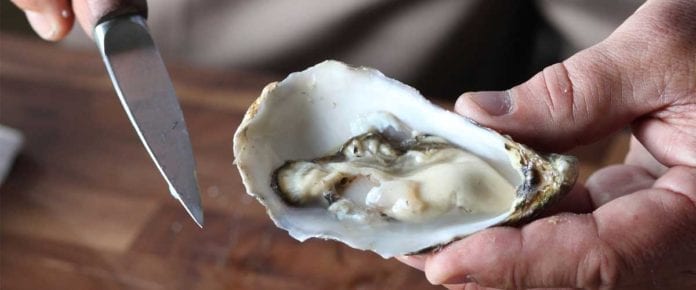OTTAWA ─ The Public Health Agency of Canada (PHAC) is collaborating with provincial and territorial public-health and food-safety partners to investigate an outbreak of Vibrio parahaemolyticus infections occurring in four provinces.
Based on the investigation findings to date, exposure to shellfish has been identified as a likely source of the outbreak. Many individuals who became sick reported eating shellfish, mainly raw oysters, harvested from eastern coastal waters, before their illnesses occurred. More information is needed to determine the supply source and distribution of these oysters. The outbreak investigation is ongoing as illnesses continue to be reported to PHAC.
Vibrio is a naturally occurring bacterium that can be present at high levels in coastal waters during periods of increased water temperatures. Most people come in contact with Vibrio by eating raw or undercooked shellfish, especially oysters.
As of Oct. 14, 2020, there were 21 confirmed cases of Vibrio parahaemolyticus illness in the following provinces: Saskatchewan (one), Quebec (seven), New Brunswick (10) and Prince Edward Island (three). Individuals became sick between early July and mid-September 2020. One individual has been hospitalized. No deaths have been reported. Individuals who became ill are between 11 and 92 years of age. The majority of illnesses (63 per cent) are male.
People most at risk for complications are pregnant women, people with weakened immune systems, liver disease and low stomach acidity, young children and the elderly. These individuals should not eat raw or undercooked shellfish.
Most people recover fully within a week. It’s possible for some people to be infected with Vibrio and to not get sick or show any symptoms, but to still be able to spread the infection to others. People can also pass on the bacteria to others through infected stool.
It is difficult to know whether a shellfish product is contaminated with Vibrio because you can’t see, smell or taste it. The following tips may help reduce your risk of getting sick from Vibrio, but they may not fully eliminate the risk of illness.
• Avoid eating raw or undercooked shellfish
• Get your shellfish products from a licensed establishment or harvest them from a fishing area which is open under the Canadian Shellfish Sanitation Program (CSSP), Fisheries and Ocean Canada.
• Store and transport shellfish at 4ºC (39ºF) in the refrigerator or on ice from the time purchased until cooking or eating.
• Shellfish must be cooked to a safe internal temperature of 74ºC (165ºF) to kill bacteria like Vibrio.
• Wash your hands for 20 seconds with soap and warm water before and after handling any shellfish.
• Always clean and proper sanitize any cutting boards, counters, kitchen surfaces, knives and other utensils used to prepare raw shellfish.
• Use only drinking-quality water for rinsing shellfish.
• Discard any shellfish that do not open when cooked.
• Eat shellfish right away after cooking and refrigerate leftovers.
• Always keep raw and cooked shellfish separate.
• Wear protective clothing (such as gloves) when handling raw shellfish.
• Avoid exposing open wounds or broken skin to warm salt or brackish water, or to raw shellfish


















